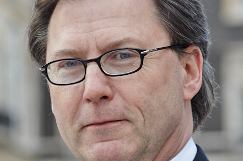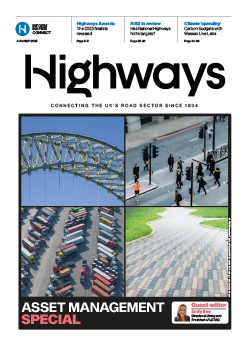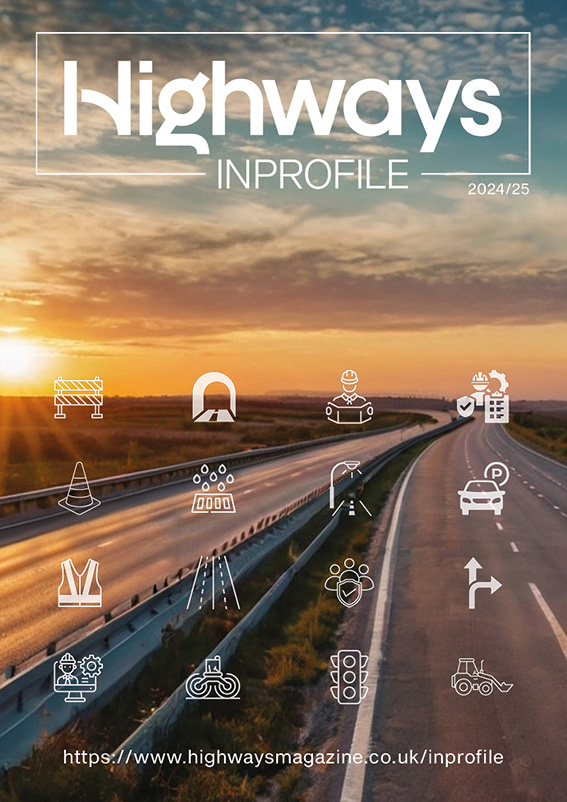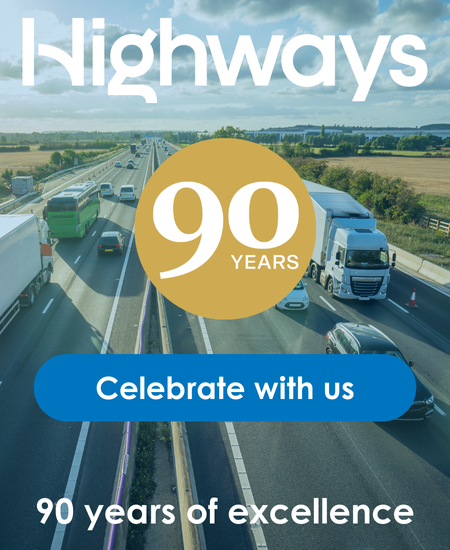Former Department for Transport director and current director of the RAC Foundation, Steve Gooding (pictured), discusses the recent release of the second road investment strategy (RIS 2) for Highways England in light of COVID-19.
I was very pleased to see the publication of the second Road Investment Strategy on 11 March. Not a moment too soon, since the first road investment period from 2015 to 2020 was about to expire. Hard on its heels came the Smart Motorway stocktake, uncertainty over which undoubtedly played its part in bringing the RIS2 publication down to the wire.

Phew. Certainty at last. The cornerstone of the RIS framework – a solid basis for Jim O’Sullivan and his team at Highways England, along with the extended supply chain, to get on and deliver.
Normally, I would have expected rather more negative comments about the quiet shelving of some major projects – including the Trans-Pennine Tunnel and the Oxford-Cambridge Expressway. And given all the anxieties stirred by the absence of a hard shoulder from our motorways, I might have thought the media would find some vocal critics of the ‘smart’ concept to speak up.
But these are not ‘normal’ times.
Before the month was out the coronavirus lockdown was upon us. I have no wisdom to offer on our national response to COVID-19. I can only offer my thanks to the key workers, including those in the highways sector, who are keeping the country going.
What, though, does the dramatic fall in traffic across the entire road network signal for the future? Might RIS 2 turn out to have been stillborn?
Not for the first time I feel the need to stress that RIS 2 is about far more than capacity enhancement projects.
Flip to page 82 of the RIS document and you’ll find a hugely welcome commitment to retiring concrete pavement, the carriageways built out of large concrete blocks, which is set to absorb some £400m over the next five years. Even more - up to £450m – is earmarked for safety barrier replacement. And £1.5bn is set to be spent on the maintenance and renewal of structures such as viaducts.
Then there are the performance metrics and the intention to develop new measures for journey time reliability, and for measuring delays from incidents and holdups on the strategic road network's (SRN) boundary with local roads.
RIS1 was a huge step forward in the way government set out its required performance from the newly created Highways England company, and its successor bears testament to a great deal of work that has been invested in tailoring an improved suite for the next five years while recognising that there is more to be done.
That said, RIS2 does have quite a slug of cash earmarked for capital enhancements - just over £14bn according to the Statement of Funds Available. The Lower Thames Crossing and Stonehenge Tunnel will swallow a sizeable chunk of this money. But the numbers have left those at the more environmentally-focused end of the transport professional spectrum questioning how it can be right for more than half of the funds available to be earmarked for enhancements when on sustainability grounds, they argue, the priority should be on reducing traffic levels, not accommodating, or even inducing, more.
Furthermore, if we look at the dramatic impact of the lockdown on traffic levels could we not see our way to a new post COVID-19 normal, where working from home and online shopping have fundamentally reduced our appetite for travel; at least for those trips which we might happily leave behind, like the congested rush-hour commute?
I have been reading and listening to quite a bit of speculation about the lasting impact this crisis might have on our travel patterns and our transport networks, and I am tempted very broadly to marshal them into two categories: ‘hopes’ and ‘fears’.
Under fears, I put the economic fallout from businesses at best going into weeks or months of suspended animation and at worst going into administration. It seems to me implausible to think that the economy will recover overnight, not least because it is unlikely that the coronavirus will simply be defeated rather than constrained, and that has major implications for the Treasury, on top of the cost of the current bail-out measures, and surely merits a re-run of the National Road Traffic Forecasts.
Turning to the hopes, I’ve heard and read rather more about how the crisis might result in a cleaner, greener future where we choose to travel less and when we travel we do so predominantly by walking, cycling or on public transport, and not so much about why this is likely to be so.
If the new normal is going to be different in a positive way then it’s going to take some positive action to make it so, and positive action generally comes with a price tag.
And it is in the context of these hopes and fears that I suspect the economic underpinnings of the RIS 2 enhancement programme will come under scrutiny.
So my former colleagues in Whitehall would be well-advised not to assume that they will simply stand, but instead should quietly get on with revisiting and re-testing the component elements of our much-debated transport appraisal system - the prices at which we monetise the value of our time, the value of our lives and the cost of our carbon emissions.
They should do this in order to be ready to debate the costs and benefits of the new normal that the Government, post lockdown, wishes to create.





